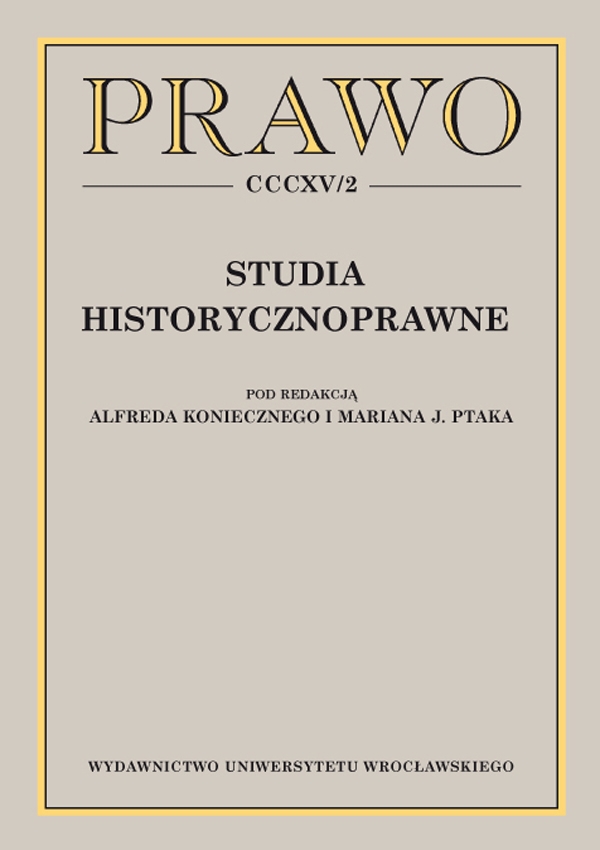

Artykuły

The organization and activities of the provincial institutions for the insane in Silesia in the years 1875–1893
The organization and the treatment of the mentally ill, presented in this publication, confined to the institutions which were managed by provincial government, which was the most important organ of the provincial parliament Provinzial-Landtag. This publication presents the situation of institutions for the insane, which were created after the establishment of the Second German Empire in 1871. The result of this event was the administrative reform of the 1870s. It was carried out also at the provincial level, that is why institutions for the insane, which since the mid-1820s were part of the assets of the local government, entered into a new organizational forms. Until then they had been managed by special, separate committees for each institution. From then on, on the basis of the provincial ordination of 1875, they were to be subject to the central constituencies in the province of Silesia. There was a national administrator starosta and provincial department Provinzial-Ausschuß, and these modern executive bodies improved the activities of therapeutics for the mentally ill. One should remember the importance of psychiatry in Silesia, where Wroclaw School of Carl Wernicke was established in this period, from which the whole modern psychiatry emerged, and the heads of hospital departments and the doctors of psychiatric hospitals were the most important psychiatrists who influenced the science to the present times eg Clemens Neisser, Emil Kraepelin, Emil Sioli, Ewald Hecker, Carl Kahlbaum and Alois Alzheimer. Upper time limit of this publication is related to the organizational changes, when all provincial institutions for the insane were standardized.
Die Organisation und Tätigkeit der Provinzial-Irrenanstalten in den Jahren 1875-1893 in Schlesien
In der Publikation wurden die Organisation und Tätigkeit der Heil- und Pflegeanstalten für psychisch Kranke präsentiert, die durch die Provinzial-Selbstverwaltung verwaltet waren und deren Hauptorgan der Provinzial-Landtag war. Es wurde die Situation der Irrenanstalten nach der Gründung des Zweiten Reiches im Jahre 1871 und der dann in den 70er Jahren des 19. Jh. durchgeführten Verwaltungsreform geschildert. Da sie auch auf der Provinzialebene durchgeführt wurde, gingen die Irrenanstalten, die seit Mitte der 20er Jahre des 19. Jh. einen Teil des Selbstverwaltungsvermögens darstellten, in die neuen Organisationsformen über. Bisher waren die Heil- und Pflegeanstalten durch spezielle Kommissionen verwaltet, für jede einzelne Anstalt eine gesonderte. Von nun an sollten sie aufgrund der Provinzialordnung von 1875 den zentralen Verwaltungsorganen der Provinz Schlesien unterordnet sein. Diese waren der Landrat und der Provinzial-Ausschuss, die als moderne Ausführungsorgane die Versorgung der psychisch Kranken optimiert haben.
Es wurde auch an die Breslauer Psychiatrie-Schule von Carl Wernicke, auf der die zeitgenössische Psychiatrie begründet ist, erinnert und an die Chefärzte und Ärzte in den Krankenhäusern, die Psychiater, deren Einfluss auf die Wissenschaft bis zur Gegenwart reicht z.B. Clemens Neisser, Emil Kraepelin, Emil Sioli, Ewald Hecker, Carl Kahlbaum und Alois Alzheimer. Die obere Zeitgrenze der Publikation ist mit den organisatorischen Änderungen verbunden, als sämtliche Provinzialanstalten vereinheitlicht wurden.